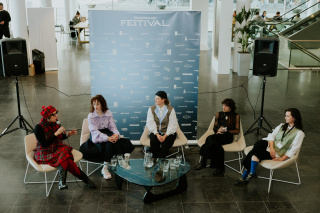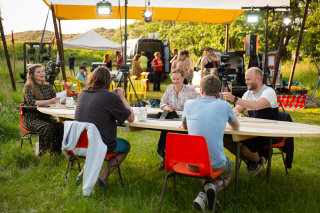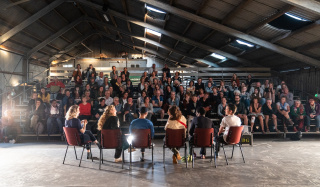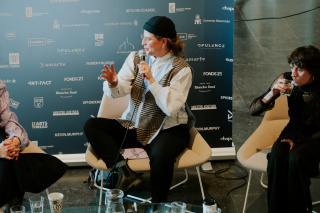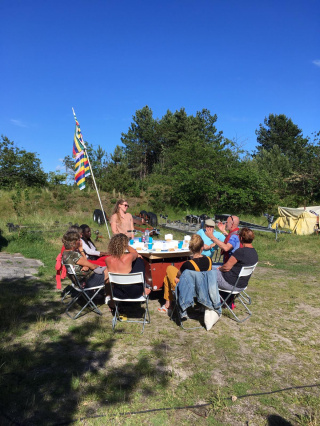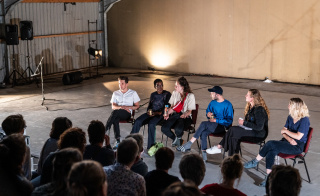In a contextual conversation, my focus is on building a bridge between the audience, the artwork, and the artist. However, this bridge does not have to result in a shared 'truth' about the artwork. Rather, it should create space for exchanging and coexisting different interpretations and meanings.
In a contextual conversation, it can be essential to give the audience the opportunity to speak. This is often particularly important with more abstract artworks, as the personal experience of the audience, rather than the artist’s intended meaning, is what holds the most interest. For me, the concept of ‘reflexivity’ is central to this process—the awareness that we all view the world through our own unique lens. And yet, by bringing together different perspectives, we can still create shared meanings.
On the other hand, audience members can also be invited to reflect through an interview; hearing someone else’s reflection often triggers our own. This can be done by inviting experts or individuals with specific perspectives to share their insights, or by engaging in a conversation directly with the artist(s) behind the work.
Formats I frequently work with:
-
The Q&A: A question-and-answer session, which can be directed at the audience, the artist, or both. The "open microphone" is an important element of this format.
-
The Expert Conversation: A discussion with experts on a particular subject who are not directly involved in creating the artwork. This format allows for a broader focus on societal changes and can incorporate data-driven research or live audience polling.
-
The Round Table: A small-group discussion with audience members, for example, in the foyer, gathered around a round table. I often use a silent disco headset in busy public spaces to facilitate intimate conversations.
-
The Talk Show: A variety of (interactive) formats that provide in-depth information on a topic or theme in the context of a festival or multi-day program. For several years, I created the morning talk show at Oerol Festival, where we explored societal issues reflected in the festival’s programming, using a different format and lineup each year.
-
The Process Interview: A conversation with the artist(s) that focuses on how an artwork came into being. This type of discussion is especially relevant when part of the aesthetic value of the work lies in its infrastructure—for example, in long-term co-creation projects or works developed with specific target groups.
My interview technique is rooted in thorough preparation (through research and pre-conversations) and, in the moment, active listening with full attention.
